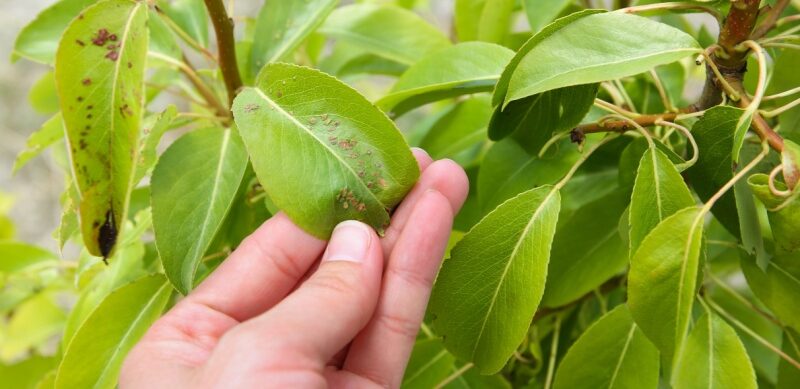Do You Have Mites on Your Trees or Shrubs?

Mites are tiny, spider-like pests that can cause significant damage to your trees and shrubs. These pests feed on plant sap, leading to discoloration, leaf drop, and overall decline in plant health. If you suspect you have mites on your trees or shrubs, it's crucial to take action promptly to prevent further damage. In this blog, we'll discuss how to identify mite infestations, the damage they can cause, and effective treatment options.
Identifying Mite Infestations
Mites are incredibly small, often less than 1 millimeter in size, making them difficult to see with the naked eye. However, there are several signs that can indicate their presence:
- Discolored Leaves: Mites feed by piercing plant cells and sucking out the contents, causing leaves to develop yellow, bronze, or stippled patterns. This discoloration is often one of the first visible signs of a mite infestation.
- Webbing: Some mite species, such as spider mites, produce fine silk webbing on the undersides of leaves, between branches, or on the plant's surface. This webbing can be a clear indication of a mite problem.
- Leaf Drop: Severe mite infestations can cause leaves to drop prematurely, leading to thinning foliage and weakened plants.
- Stunted Growth: Mites can interfere with the plant's ability to photosynthesize and absorb nutrients, resulting in stunted growth and reduced vigor.
- Visible Mites: In some cases, you may be able to see mites moving on the leaves or branches. A magnifying glass can help you spot these tiny pests.
Damage Caused by Mites
Mites can cause significant damage to a wide range of trees and shrubs, including ornamental plants, fruit trees, and evergreens. The extent of the damage depends on the severity of the infestation and the type of mite involved. Common types of mites that affect trees and shrubs include:
- Spider Mites: These mites are notorious for their webbing and can cause extensive damage to a variety of plants. They thrive in hot, dry conditions and can reproduce rapidly, leading to large infestations.
- Eriophyid Mites: These mites are often invisible to the naked eye and can cause galls, leaf curls, and other deformities. They affect a wide range of plants, including fruit trees and ornamentals.
- Rust Mites: Rust mites cause bronzing or rust-colored patches on leaves and fruits. They are common on apple and pear trees, as well as ornamental plants.
- Broad Mites: These mites cause distorted, stunted growth and can affect a variety of plants, including citrus, peppers, and ornamentals.
Treatment Options
Effective treatment of mite infestations involves a combination of cultural practices, biological control, and, if necessary, chemical treatments. Here are some steps to take:
- Cultural Practices:
- Regular Monitoring: Inspect your plants regularly for signs of mite activity. Early detection is key to preventing severe infestations.
- Proper Watering: Keep your plants well-watered and healthy. Stressed plants are more susceptible to mite infestations.
- Cleanliness: Remove and dispose of infested plant material to reduce its mite population and prevent its spread to other plants.
- Biological Control:
- Beneficial Insects: Introduce natural predators, such as ladybugs, predatory mites, and lacewings, to help control mite populations. These beneficial insects feed on mites and can provide long-term control.
- Horticultural Oils: Apply horticultural oils, such as neem oil or insecticidal soap, to suffocate mites and reduce their numbers. These oils are less harmful to beneficial insects and the environment compared to traditional pesticides.
- Chemical Control:
- Miticides: If cultural and biological controls are not sufficient, consider using miticides specifically labeled for mite control. Follow the manufacturer's instructions carefully and avoid overuse, as mites can develop resistance to these chemicals.
- Rotating Chemicals: To prevent resistance, rotate between different classes of miticides. Avoid using broad-spectrum insecticides, as they can harm beneficial insects and exacerbate mite problems.
Mites can cause significant damage to your trees and shrubs, but with early detection and proper treatment, you can protect your plants and maintain their health. At The Experienced Gardener, we are dedicated to helping you keep your landscape beautiful and pest-free. If you suspect a mite infestation or need assistance with pest control, contact us today for expert advice and services tailored to your needs.


